
Jo Ellen Bogart
Profile by Dave Jenkinson.
Explains Jo Ellen, "Malcolm actually did start off in my own bathtub. I use that kind of glycerine soap that becomes very clear and thins to a sliver The bar had stuck to the bottom of the tub, and I really couldn't quite get it up. In my mind, I did a little turnaround, 'The soap's stuck to the tub. What, if instead of being stuck to the tub, it were flying about?' In other words, from no movement to excess movement. Then I thought, 'Oh, you could have a real chase going on.' Of course, the book's totally in the traditional vein of all those little edible creatures that ran away. Basically, I just designed the book on the platform of something running away, what/who you meet, and the reactions of the other people. It reeled itself out. 'Oh my gosh,' I thought. 'I like that.' I put on my pyjamas, jumped into bed and wrote it in this tiny little spiral notebook from Zellers."
Books by Jo Ellen Bogart
This article is based on an interview conducted in Toronto on March 24, 2001
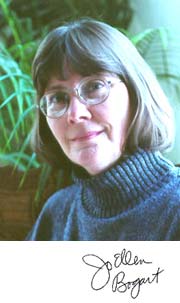
Question: What do Jo Ellen Bogart and Archimedes have in common?
Answer: Both had a "eureka" bathtub-discovery experience. While Archimedes found a scientific principle, Jo Ellen discovered the plot for her first book, Malcolm's Runaway Soap.
The eldest of four children, Jo Ellen Bogart was born in Houston, Texas, on October 20, 1945. Her father was in management with the telephone company, and, as Jo Ellen remarks, "Companies seem to like to move people around, and so every two and half or three years we would move. That's disruptive to a young life. Every time you have to move, you get that sinking feeling in your stomach. 'Oh no. I finally just got everything fixed here the way I wanted, and now I have to move.' I went to elementary school in Houston and San Antonio, junior high in Dallas and Houston, and high school in Houston. With an October birthday and the Houston cut-off being September, I was almost seven when I started school. Because I lived in the country and didn't have swarms of kids to play with, I was more than ready to go. The siblings didn't really happen until I was five, and they took my mother's attention away from me somewhat. To then, I'd been the only child. The funny thing about Daniel's Dog is that it was a secret from me for at least a year after the book appeared that I had actually written a little part of my life story into it - the experience of having to share a parent when you'd had the parent to yourself for a long time."
Unlike many authors who knew from a very early age that they wanted to be writers, Jo Ellen admits, "I don't think I had any real clear cut aspirations. Certainly nothing like, 'I want to be an astronaut or a lion tamer.' I was pretty innocent of the world, and, even into high school, I still didn't understand the scope of opportunities that existed. The high school counselors would ask, 'What do you want to do?'and if you told them, they'd mentally go, 'Oh good. You're "done" with.' They didn't explore the situation or ask, 'Well, have you considered this?' When you're going to school, the main profession that you're aware of is teaching, and I did decide I wanted to be a teacher. For me, this actually was a good choice, but I would rather have made this choice with more knowledge of what my alternatives might have been. I lucked out in a way because I do think teaching suited me. Looking back, it really is my orientation in life to learn and share. This is what I do as a writer, and it does seem to be my normal makeup." Jo Ellen acknowledges two other reasons for her initial career choice. "My mother was a teacher, too, and then there's the whole female thing which my mother didn't fail to point out: teaching's a very fine profession when you would like to raise children. Of course, my mother was sure that I would be raising children, and I was too."
At the University of Texas in Austin, Jo Ellen took a BS in Elementary Education, graduating in 1967. In her final term, she married Jim Bogart, a transplanted Torontonian completing his doctorate in herpetology. "We'd only been married since March when Jim came home one night and asked, 'How would you like to go to Peru while I do some post-doc work?' By August, we were in our little Volkswagen bus driving south. It took us two months, and we were gone six months out of the first year of our marriage. When we got back, I took courses for a BA in psychology, and, because we were headed off to South America again, this time to Argentina and Brazil, I also took Portuguese in anticipation of the trip to Brazil. After we came back, I took more Portuguese and finished up my psychology degree."
"While we were having so much fun in South America, the university faculty positions altered themselves from being plentiful to being much less so, and looking for a job was tough. We spent four years at a university in northern Louisiana, but the school was not big enough to fund and equip my husband's research adequately. James is a zoologist, but his area is actually evolutionary cytogenetics, and he works with frogs and other amphibians. In 1975, a position opened at the University of Guelph where James had actually taken his first degree. It looked like he would be able to pursue his career profitably there, and it was a nice place to live. Our first child had been born while we were in Louisiana, and I don't think we would have gone anywhere where we felt we couldn't have raised a family safely."
While Jo Ellen has her degree in education, she has never taught full-time. "I really didn't want to try to teach on a regular basis when the kids were little, and, after we moved to Canada in 1975, I didn't even start supply teaching until our second child went to school. Actually I began to write really soon after coming here. Kids in schools ask, 'Why did you start to write?' And I answer, 'That is the hardest question. It's almost as if I were just playing out my destiny. I think it's what I was supposed to be.' Although some authors manage to have amazing careers while teaching, had I gone into full-time teaching, what with taking care of a house and two children and teaching, I don't think I would have had the energy left over to write. So I think I found this little area that, for me, is being a 'teacher' but just from the sidelines. When you produce materials that speak to children, you're having an influence on your readers, and you are communicating. It's a wonderful thing that I did figure out a way to do it."
"Writing for children is pretty much all in the writing field that I've ever done. I've written a few pieces of adult poetry, but they're really not things I feel I want to share. It's more just a private creative process. When you start off writing, you look at the advice writers are given which is often to start with publications like magazines. Their publishing you is not such a major commitment on their part unlike a picture book which is a huge financial investment. Consequently, sometimes book publishers are a little less willing to take a chance on new people. While I didn't actually have a picture book until 1988, I think my first publication was about 1976. I never say to anyone who wants to write, 'Be prepared for 15 years of slogging.' I say, 'Just get in there. Do your best, and see what happens.'"
"I did take a writing course at the University of Guelph from Robert Nielsen, the publisher of the Canadian Children's Annual. Probably the main effect of that particular experience was that he asked everyone in the class to submit a piece for the Annual. I gave him a poem I'd originally written in Spanish. When we came back from Peru, we brought back a pair of little parrots, and I wrote this poem to one of them, sympathizing with his situation of having been wrenched from the rainforest. Robert said he'd like to put it in the Annual, but he also asked for an English translation. That was probably my first publication. When it was immediately accepted, I thought, 'Oh, that was cool,' and so anything that interested me I would research and write. I had an article in Owl magazine in '87 about Meerkats. I'd discovered these charming, adorable little creatures, then quite unknown to the public because they had not yet played a role in Lion King. I also wrote an article about possums that was going to go into another magazine that unfortunately went under before my article got published. It took me a while to get a piece with Cricket. 'Winter Spider' was actually written from a personal experience. Sometimes, if I have an experience that I find thrilling and think a child would relate to, I'll interpret it into something for children and just let myself, a younger child self, have the starring role."
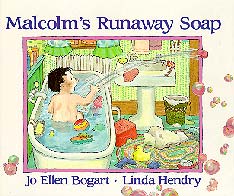
"All the time I was doing these magazine things, I was also writing picture books. In 1987, Scholastic took Malcolm's Runaway Soap and shortly thereafter Annick took Dylan's Lullaby. As it happened, Annick got that book through the publication process faster, and it actually physically appeared several months before Malcolm. Consequently, when the kids ask, 'What was your first book?' I reply, 'Well...' and show them the two books."
In retrospect, Jo Ellen recognizes the unconscious source of the fountain at the conclusion of Malcolm's odyssey. "You don't think of these things when you're writing a book because it's just spinning out of your subconscious. At the University of Texas, there's a huge fountain, the Littlefield Fountain, with wonderful, larger than life-size statues of mermen riding aquatic horses. Students would throw powdered soap into the fountain, and it would bubble up and overflow right on to the road. They also had the practice of coming and retrieving you on your birthday and throwing you in the fountain. So there you have the fountain and the bubbles. I guess there must have been a little subconscious prompt. Who knows what really goes into the soup when you're making a story?" Another possibly subconscious detail involves the strawberry flavored runaway soap. Jo Ellen explains, "As a present one year, my mother-in-law had given me little soaps shaped like strawberries, and so that was in my head. I've been friends with Robert Munsch for years, and he once said to me, 'The Mud Puddle had soap in it, smelly orange soap. I really missed an opportunity there. It should have been smelly yellow soap.' Now, what effect did that comment have on me?"
In one review of Malcolm, the reviewer asked why Malcolm was taken home by a police officer when his mother was present. Jo Ellen proffers an explanation. "When I write a picture book, I typically write it just as I want it to be. I don't put in anything extra, and so I know a lot of the information should be in the pictures. But, of course, if you don't write it into the text, the illustrator doesn't have to put it into the pictures. You try to negotiate, saying, 'By the way, this is what I was thinking,' but they don't always listen to you. I had actually pictured Malcolm as having a little sister hanging onto his mother's leg, as well as a baby in Mom's arms so she couldn't really easily follow him. That's the 'getting-rid-of-the-parent' thing which is part of many stories so that the child characters can have their own little adventures. I was assuming that you, the reader, would assume that the town was small and safe and Malcolm wasn't going very far. But, since it was my first book, I never saw linears for that book. I don't think I saw anything until the folded and gathereds were done. When I opened it up, there's his mother at the fountain. Scholastic forwarded a letter from a mother in Israel whose child asked the same policeman/mother question. Linda Hendry, the illustrator, got a copy of the letter too, and she asked, 'What are you going to say?' I'm going to say, 'I didn't mean the mother to be there.' That's the answer."
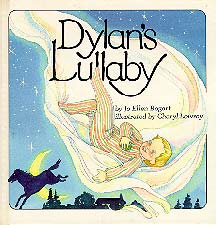
While Malcolm was "found" in a bath tub, Dylan's Lullaby was created in a car. "I had a childhood friend who grew up, had a son and named him Dylan because he liked the singer, Bob Dylan. At that time, I'd never heard of a kid named Dylan, but it's a beautiful name, I love the 'l' sound. I've got l's in my name. One night, as I was driving to Toronto, the story about a little kid using his creativity to form a lullaby just suggested itself, and somehow in this imaginary way the lullaby has the ability to transport him to other places and other experiences."
One of Jo Ellen's books that was not published until the mid-nineties was actually created much earlier. "There were a lot of things that were published out of the order in which they were written. For example, Gifts was written in 1982, and Sarah Saw a Blue Macaw in 1984, well before Malcolm, before 10 for Dinner, before Daniel. I first wrote Gifts as a song called 'Souvenirs.' The theme I was working on was those less common gifts that people give you: 'Look, I brought you this rock from the Nile,' or 'I found this feather by the Eiffel Tower,' the unusual gifts, not the t-shirts or ash trays, but also the totally intangible gifts like descriptions and stories. Grandma wasn't actually in the early versions. It was more a hypothetical situation, like 'My friend went traveling and brought me these things.' I tell kids that my favourite gift to receive from a trip is time spent with the person who traveled and having that person really relate the experiences with stories."

"So, spending time and sharing experiences with me was in the original idea of the song. After thinking of the piece as a song, it was almost as if one day I had this sudden thought, 'Oh. There are a lot of images here. This could be a picture book.' Because it was originally a song and because I wasn't thinking of what could be illustrated, some of the images, like a rainbow to wear as a ring, were difficult, but Barb Reid dealt with them valiantly and creatively. I adapted the original text only a little bit and thought, 'OK, let's let this be one of those traveling grandmas because there are lots of older women out there who do that. For instance, my next door neighbour's mother, who's at least in her mid-eighties, went to China, then France and Austria. It's setting an interesting example for children, saying, 'Look, I'm an older person, but I'm still curious. I'm still willing to go out and see things outside my own home and have experiences. Everything doesn't have to be just what I'm used to. I can take the changes.'"
That the granddaughter aged throughout the story was, Jo Ellen acknowledges, the illustrator's idea. "I have to give Barb the credit for that entirely. I actually have a photocopy of the sheet of paper in which she laid out the trips, how many years between each one, how old Grandma and the child would be, and then she worked out the appropriate clothing for the year. Children will ask, 'Did Grandma die?' and I say, 'Well, Grandma died sometime.' I had not actually written it with the idea that Grandma would be dying during the course of the book. We don't really know. We did switch the trips to put England at the end because it would be a little less daunting than some of the other trips. You can see that she's getting older. Originally England had come in the middle, and Barb asked, 'Do you mind if we put England at the end?' and I replied, 'No, I see your reason.' There was really no rhyme or reason to the order that I put the trips in except that I might have had an artistic approach. You don't want to put too many 'similars' together. You want to have a certain tension between say the Arctic and then India so you have the cold and the hot."
"Another change we did make involved the baobab tree's being in the verse about India. While they do grow there, they didn't originate there, and so I thought, 'If we are going to give this educational tidbit that this tree exists, why not plant it in the child's mind in the place where it originated?' So, right there on the phone, we stuck the baobab tree in Africa which then left a hole in India. I said, 'OK, let's see. What would you have me bring? Something nice, like curry and rice?' And Barb goes, 'Yes, another sense' because we've got sound and smell and taste as well as the visual. I really love the role that I can play, perhaps in more cases than I expect, in being the first one to actually present a word to a child. It's conceivable that a child would never have heard of a didgeridoo before he or she came across it on the Australia page. This possibility is very thrilling to me."
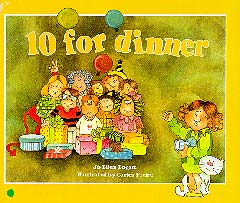
"With 10 for Dinner I was sitting on my patio in my shorts with my feet propped up, writing a little story. I don't use a laptop. I just have my desk computer, and so in nice weather I still write in longhand sometimes, especially poetry or notes about things. I was writing a story, which never went anywhere, about 10 little possums, but, as I was designing the personalities of the little possums, I had one who was really squeamish, like 'Eeuw worms!' I thought it would be nice to do a story that dealt with kids being the same and kids being different and with kids having all these different ideas, and I was playing off of these similarities and differences. I immediately put it in a party setting because our kids were still little, and, horror of horrors, we'd just been through the years of throwing birthday parties. When my mother, the teacher, read the book, she said, 'Oh, it's overlapping sets. You take the same kids and divide them up in different ways for each time, and it's never the same. They're all switching around and overlapping.' And I responded, 'That's right, Mom. It's a math concept book.' I also based it on some math blocks that our kids had. There were blocks in various lengths, and so, for instance, the two five unit blocks together were the same length as the ten unit block, and five little two unit blocks, end to end, also made the same length as the ten unit block. It was a very graphic way to learn adding and subtracting and factoring. I pretty much wrote 10 for Dinner on the patio. Scholastic knew right away that they liked and wanted it."
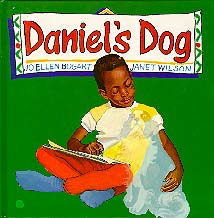
"In Daniel's Dog, I defined the family as black because the book didn't start with the sibling theme but with the ghost dog. When my son was about 10, he had a friend, the dedication's Mike D, who said that he had a ghost dog. His statement sensitized me to the ghost dog thing so that when I was in a bookstore in Texas and saw a book called Dog Ghosts and Other Texas Negro Folk Tales, by John Mason Brewer, I bought it and read the stories. They are stories from African-American communities around Texas, more basically towards the centre where the Brazos River is. The stories typically are of ghost dogs that are representing loved ones coming back to perform some needed service to save the family in some way. I thought that just fit perfectly. It helps Daniel understand the situation of something needing care, but then I tie it in with the grandfather. Because the grandfather dies, Daniel's in a really sensitive position: he's got this competing baby, and he's lost his grandfather. My thought was that the grandfather probably had time, as grandparents do, to tell the stories, and he would have told the stories of ghost dogs in general and specifically of his Lucy ghost dog that he had as a child. Daniel's having the dog is a tie to his grandfather, is a way of dealing with the death, and is a way of dealing with the little sister. It all just tied in so beautifully."
"I didn't know the illustrator, Janet Wilson, then, but, because the story was based on the ghost dog stories which are a cultural phenomenon, Daniel had to be black. I guess I have a thing for grandparents because, even though there's no grandparent in the book, there's the spirit of the grandfather still having this stabilizing effect on the grandson. I think that grandparents are often the passers-down of the culture. In all cultures, the elders tell the stories. Another issue with Daniel is that I never meant to not include the father. It's a young family, and Daddy is busy making a living. Sometimes people look at Daniel and take it as a single parent book, but that was not my intention. I wasn't trying to give fathers less of a role, but I can see how it happens. Dads are often really gone a lot. While Daddy seems to be missing in my books, that's only in the books that have been accepted. There are some really good dads in some other books that haven't been published. I have a story which I just love but haven't been able to place yet. It's about a single father with a daughter. The two are very close, and you can see how much he loves her and how he's trying to help her grow."
"Sarah Saw a Blue Macaw's an unusual book. It doesn't fit into a category. It's an artistic treatment of a rainforest. It is art, and I try to point this out to kids. What I tell them is, 'We do go though a day. We also switch levels from up high in the canopy to the mid canopy and pretty much down on the ground. Sarah has the ability to range through those various altitudes.' With Sarah I actually served as the 'illustration' consultant because, for one thing, I'd been in the rainforest of Peru. My husband is a zoologist, and I mean our family speaks 'animal.' Our children know all kinds of things about animals that a lot of kids don't know because that's our daily life. I would define the named main character, and any animal referred to would be defined. As far as stand-ins, like the extras, I would say to the illustrator, Sylvie Daigneault, 'Here's a list from which you may choose extras.' It was all quite orchestrated, and so Sylvie was actually left with little wiggle room. I also sent photo references including photographs of Clyde, a little coatimundi I adopted when we were in Peru. Sylvie's work, done in colored pencils on colored paper, is stunning, and readers always tell me how much they like it."
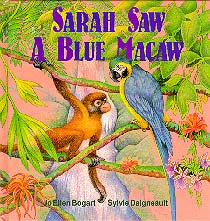
"Kids will ask, 'How long do you take to write a book?' And I'll respond, 'OK, here's Malcolm. It took 45 minutes. Now here's Sarah, and it took 3-4 years.' I wrote Sarah after Gifts, in 1984, as I mentioned, and when I first wrote it, I was not thinking 'rainforest.' The rainforest came later. I was working in my children's school as a volunteer speech therapist, and this little red-headed girl came in one day and said, 'Look. I brang an apple for my lunch today,' When she said 'brang,' I thought, 'Oh dear. I can't just let that go by,' and so I said, 'Oh, you brought an apple.' While I was doing speech remediation, I thought, 'There's no reason why we couldn't deal with a little bit of grammar too.' We began to make up little sayings like, 'Every day I sing a song. This morning I got up and [pause] sang a song.' If you set up a situation like that, once you've focused a little bit on it and the child is thinking, it was amazing how often she will come up with the right answer. We started playing, and so that is where this story actually originated. What I started out writing was, 'What did Sarah see? Sarah saw a blue Macaw. That's what Sarah saw.' Just three lines, much simpler. It still incorporated the irregular past tense verbs since the kernel of the book is the irregular past tense verb."
"You may have noticed that Sarah is dedicated to Jean Little. I'd written most of the book and was talking to Jean about it on one of our trips to Toronto. Those trips to Toronto have been very profitable. I was reciting some of the verses because Jean always likes to know about what you're doing. I told her about the three lines, and she said, 'Hmmm.' Because she was an English major and writes a lot of poetry, she has quite a grasp of rhyme and rhythm. She said, 'What if you then said, "Sarah saw a blue Macaw" and then flipped that line and then the fourth line would rhyme with the first line? Wouldn't that be cool?' 'Yah,' I replied. 'It would be hard too.' 'Yes,' she said. 'But you can do it.' It was just in draft form when I was talking to her, and I had perhaps 8 or 10 verses. So I went back and started working on them."
"When you want to write one of these verses, first you must have the verb that is irregular in the past tense or you have no structure. It's interesting that the simplest words in English are the ones that change irregularly more so. It's not like 'anticipate' or 'prevaricate' but 'sing' or 'go.' They change, and they're complicated for children who simply have to go through that stage of learning them. Mainly they learn them through speech. They need to hear them done correctly, or they will pick up the wrong ones. They will say 'brang,' having generalized from 'sing/sang' to 'bring/brang.' The first draft that I wrote actually could have been children doing things, but when I was talking to my Scholastic editor, she asked, 'Have you ever thought of having animals?' And I said, 'Yeah, I was kind of thinking of it,' and so I did a second writing that had animals, but animals still doing child-like things such as riding a bike."
"Then I thought, 'I could take it to a totally natural setting, and, if so, I know just the setting. I would like to use not just the rainforest but specifically the rainforest of Peru which is where my husband and I spent those four months when he was doing his research.' As a consequence of that change, the first thing I had to do was go through and eliminate all the verbs that are not appropriate for animals in a natural setting. Thank goodness they can still 'drink,' 'run' and 'fly,' but they are no longer drawing. I was making long lists of irregular verbs. 'Sleep' works, and they still 'hear' and 'swim.' I had to revamp the whole thing, and so that was the third entire rewrite. I know some people will automatically think, 'Oh, Sarah's from when you were in Peru.' Only on the third writing did we actually take it to Peru. That was really a work intensive period because I researched the animals very carefully. I'm really trying to throw in fascinating bits of information. The emerald tree boa, for example, is in the typical position it assumes after eating a big meal. The snake drapes itself across a branch, balanced on each side, and just sits there for a long time, digesting."
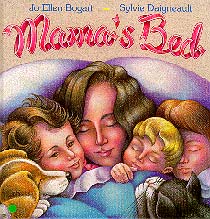
"A lot of what happens in Mama's Bed has counterparts in my own life. The jumping on the bed was me when I was little because my mother, busy with other kids, thought, 'That's a pretty innocent thing to do. That'll keep her busy.' Mom cutting out fabric on the bed is me as a grownup. When my kids were little, I made a lot of their costumes. I've actually written a story called 'The Brown Fur Suit' that describes how the same fake fur brown suit was adapted to be three costumes for three different ages and sizes and stages of one child. We have still the brown fur suit, and I carry little parts of two of the costumes when I visit schools . There was no dad in Mama's Bed either, but, in this case, I did think she was on her own. However, I don't say it because, if a child needs it to be that way, the child will see it that way. I don't have to define everything. I am very interested to know that Mama's Bed and Two Too Many are both being translated into Korean. It is so informative to see which books can travel to other cultures."
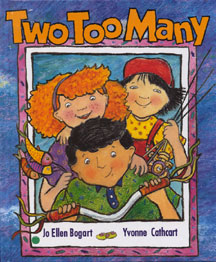
"Two Too Many actually was one of those 'bolt of lightening' types of thing. I heard the title in my head and liked the rhythm of it. I interpreted it to mean two more than the right number, which means you need to define the right number, or two more than fits because of the nature of things, or two more than you want. In order to know what's two too many, you need to know what the right number is, and the challenge was to try to choose circumstances in which a child would understand that there is a right number for some things. It is a tricky concept. When kids do patterning books based on Two Too Many, some of them get it and some of them don't. Like Ten for Dinner, Two Too Many is a math concept book, and it is a pretty sophisticated concept. But when I bring in 'Marvin's mama gave him two too many brussels sprouts,' I don't think there are many kids who don't understand the humour right away. Marvin didn't want any, and so two brussels sprouts is two too many."
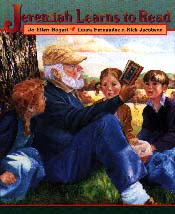
Jeremiah Learns to Read was a winner of the Ruth Schwartz Award. According to Jo Ellen, "The character in Jeremiah is based on a real person, but he's not at all the person in the book. His real name's Elijah. One day, Robert Munsch and I went to Toronto to hear Camilla Gryski give a talk about Roald Dahl. At the luncheon, Bob said, 'I just got back from a trip, and I met an old man learning to read.' It was like dynamite, boom! That's a book! At that point, I wasn't sure I was going to do a book, but, as I liked the idea, I asked Robert if he thought he would be writing on that subject. He replied, 'No, I don't have any plans for that. If you want to write a story, that's fine.' I wrote it in the next few weeks, and, in fact, I wrote the entire book in the bathtub. It was midnight, and I wanted a bath, but the story was starting to happen in my head. It had started that afternoon when I was doing something outside. I started hearing the words, 'Jeremiah knew how to do this, and he knew how to do this, and he knew how to do this, but he didn't know how to read.' I thought, 'OK, it's time to start.' It had bubbled up enough that it was time to start writing. I just jumped into the bathtub and pretty much wrote the whole thing there. I had to reheat the water a little bit."
"Later, I asked Bob where he'd been when he met Elijah, and it turns out Bob was in Inuvik. I'd already written my story, and once you've written in 'maple syrup,' you're in a certain part of North America, certainly not Inuvik. I envisioned how different the story would have been with a person living up there. Then the most wonderful thing happened. The phone rang, and it was Shane Brewster calling me from Inuvik and inviting me to come and talk to the kids. I said, 'I don't know if you know this, but my newest book is inspired by someone from your community. It turned out that Elijah was the custodian of the school and a storyteller. I got to have a whole lunch hour with him."
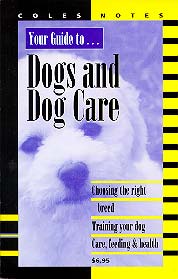
"Non-fiction is a new direction I'm now taking, and the funny thing is that I can't understand exactly why I didn't do it earlier. I consider my picture books to be the products of the heart. It's not that they don't have information and concepts, but, for the most part, I'm dealing with feelings. It meant a lot to me to do those, and, to me, nonfiction seemed more regimented maybe because you had fewer options because it was based on the truth more. I did Your Guide to Dogs and Dog Care first, and I did it because I'm a serious dog lover. I like all kinds of information about dogs, the breeds, their behavior, training, everything. I chose the topic, worked really hard for a long time and ended up writing about twice as much as needed. They actually told me they wanted 25,000 words, and I hit 24,000 when I had three chapters to go. My editor said, 'Don't worry. I'll fix it. You just write it. It'll be fine.' And it was. I hit 39,000 words before I was done, and he trimmed it down nicely. Writing that book on dogs opened the door for me because I'd been holding back for some reason. It bolstered my confidence and got me hooked on serious research. I have a librarian background too. I didn't take a degree in librarianship, but I took two of the three courses you need to become a teacher-librarian in Ontario. Now I'll just run the two tracks in my writing - the more artistic approach and the more factual, straightforward approach. However, I hope to keep an artistic approach in my non-fiction, too. Isn't the newer name for non-fiction creative documentary?"

"Money: Make It, Spend It, Save It was a suggestion from Scholastic. I'd given them a different non-fiction topic which they thought about but didn't take. Instead, they said, 'What we really need right now is a book on money for kids because Scholastic in the States has a really good one, but it's geared toward American kids. We want one for our own Canadian kids.' I gave it some thought because I wanted to make sure I felt comfortable with it. I started doing research and realized that I'd actually been pretty interested in the topic for quite a while because I'd been reading in print and online about investing just to make myself an informed person. The history of money was just so unbelievably interesting. My editor, Joannne Richter, and I had so much fun comparing notes on the huge store of information there is available on that topic"
Jo Ellen says she finds the whole process of writing nonfiction to be quite different from creating fiction. "With a picture book, I write it, send it in, forget about it for a while, and write another picture book while I'm waiting to hear if a publisher's interested. With nonfiction, you send in proposals, and so you've got this proposal out and that proposal out. What if too many come in at once? It's not a written book, and I'm not used to this kind of pressure. This is like being a grown-up. It takes quite a bit more organization and discipline. This whole proposal thing was nothing I was used to. I'd just send in the whole picture book manuscript. It's only three pages. Nonfiction's much more businesslike, and it takes more control."
As to how she works, Jo Ellen says, "I usually go to the computer the first thing in the morning and check personal email. I'll read Publisher's Weekly that comes once a day via email, and I read several listserves that have to do with the industry. For instance, I'm on a picture book listserve and a listserve for children's writers in general. It's like a river flowing by every day, and I stay really plugged in. Then, if I have a project on the go, it's, 'OK, get to work.' However, as soon as the weather is nice, I'll be in the garden while it's cool, and then I'll come inside and work during the heat of the day and maybe walk the dogs at 3 in the afternoon. That's the closest I come to a schedule. In the winter, sometimes I just sit down at the computer and have things to do. Either it's my own work or I want to know something, even a tidbit, a word usage. I'll throw it into Google, and that will bring up something that will shed light on it. 'Yes, I didn't just imagine that word usage.' It's like I'm grafted on to the computer. At some point, because I have to focus because this project needs to be done. I'll discipline myself and just bookmark it [I'll be back], back up six pages to where I was and get back to work. I feel amazed to be living in an age when there is such a thing as a machine that can plug you into the intellect of the world, not that there isn't some unreliable information, but I think I'm pretty critical."
With a husband in zoology, not surprisingly the Bogart household has been home to many pets. "I have Tor Tor, my 33-year-old tortoise. There's no reason why he can't reach 60, and so he's a long term pet. I have a little box turtle too, and I'll put her in a cardboard box and Tor on the rug, and we'll all bask together in the sun. We've had an African Clawed Frog since my daughter was five, and she's now 24. We didn't have any children when I had the coatimundi. Because coatis are semi-arboreal, they climb your drapes. Having a wild pet was fine when he was our only 'child,' but we knew we were going to want to have children, and there's no way I would mix a totally wild animal with a child. It would be irresponsible, and so we put him in the Fort Worth Zoo where they had a coati colony. About a year ago, I got an Australian tree frog, actually a Dumpy Tree Frog, the really big chubby kind with great big toes. My husband has lots of animals at the university, and sometimes a few come home for a visit. In terms of mammals, we're at a low point right now. Just two dogs. We used to have rabbits, hamsters, gerbils, a chipmunk, and guinea pigs, but, when the last guinea pig died, I thought, 'OK, that's all. Mom has to clean the cage anyway.'"
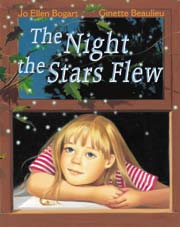
Jo Ellen's next picture book is The Night the Stars Flew. "A few summers back, I had friends at the cottage and fireflies came out in great numbers. I said excitedly, 'Come out and see the fireflies!'and the reply was something on the order of 'But this chair is so comfy.' I could not get the person to come outside for the rare and wonderful show. That seemed to spark the book which is about a little girl seeing fireflies for the first time, from her bedroom window, and having to drag her parents outside to see them. The setting is a house on a lake, and so is similar to our cottage in that way. The slender maple Millie sees is, in fact, the tree outside my own bedroom window at the lake. I am fond of insects, and especially fireflies, and would never pass up the chance to see them. They are wondrous and magical to many people and appear only in the right circumstances of habitat and weather conditions. The book is illustrated by fine artist and first time illustrator Ginette Beaulieu, from Quebec. She works in oils and does lovely shadows and skin tones and light on water.
"A year from now, I have a biography of Maud Lewis coming out from Tundra. The way I like to choose a topic for a book is not to go looking for it. I just go along, learning as much as I can and let the idea find me. I went to the Art Gallery of Nova Scotia where there is this magnificent display of Maud Lewis' work and the little house she lived in. The entire house is actually in the gallery. Well, this just made it so real. I stood at the door of that house forever, looking in, imagining Maud's life in a structure the size of one room in today's house. I had known her work and liked it, but it was a very peripheral thing because I was busy with other things. All of a sudden, it was front and centre, and I was confronted with her life and her work. I knew before I left the gallery that day that I wanted to do that book. I went to the gift shop and looked. 'No books for kids on her,' and I thought, 'This is a gap that needs to be filled, and I desperately want to be the one who does it.' I have an interesting feeling about her. I wish I could have met her. The biography is a picture book treatment. I think a book is a perfect way for a child to come across something the first time. It's controllable. It's not intimidating. You look at it at your own pace hopefully. Maybe someone reads it to you, but later you get your hands on it, and then you visit with it and experience it. I am very excited about how this book is turning out, with great drawings by Mark Lang."
Looking back on her writing career, Jo Ellen recalls that her longtime editor, Diane Kerner, had once suggested, "'You know, you could write nonfiction.' I just brushed it off because I guess right then I had things I needed to do. It was where I needed to be at the time. Things have evolved. I've grown. It's kind of like a blossoming. Now, I'm really happy with writing nonfiction along with my fiction because it gives me a lot more options of what to be spending my time doing. I can go in more directions. I started out more with poetry, not just the picture books, but I had little poems in Chickadee, something in an anthology and a couple of haiku in a haiku book. Poetry was something that I was working on quite a bit which really went nicely into picture books because they're both so succinct. The 'polish it, polish it, every word counts' idea is so similar with poetry and picture books. It's just been an evolution in my writing. If I'd looked at myself carefully way back then, I would have realized that this was a direction I would go in and be comfortable. I wonder what other directions I might go in."
